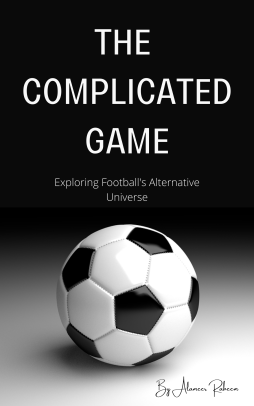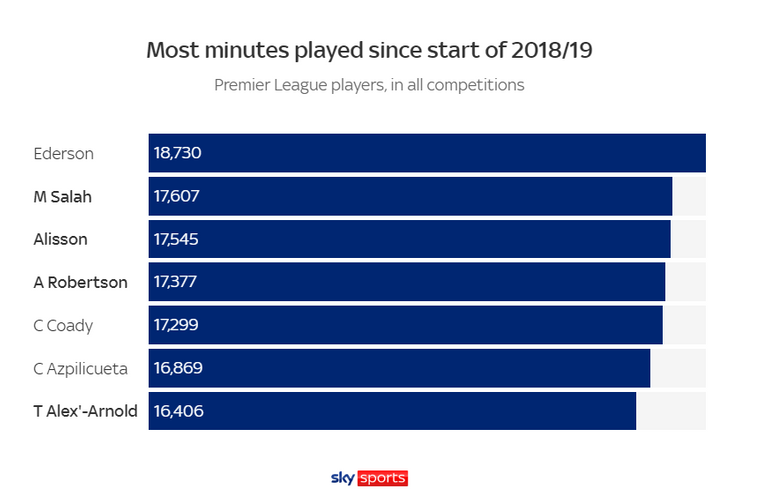Using Stats To Identify Liverpool's Problems This Season (Offsides Traps. Pressure, and age)
In the first part of this series, I shared a tweet shared by analyst and Liverpool supporter Josh Williams.
I also pointed out how everything mentioned in it is factual but is the conclusion or hypothesis that Josh Williams proposed correct?

Liverpool's Defensive Identity
Josh's theory is that Liverpool's decline has to do with the decline of offside traps and pressure. He did so by pointing out that Liverpool's defensive work saw them have two offsides and 35 pressure instances per game. So, Josh is proposing that there's a relationship between those two and Liverpool's decline. How can we find out whether that's true or not?
Well, the first step of deductive reasoning here is searching for contradictions. What this means is that if Liverpool's decline is in fact caused by those two, then we need to find a time period when Liverpool as a team was doing great and those stats were higher. That's just the first step and it requires a sizeable pool of data. If we go to a sizeable pool of data and find that Liverpool was doing great while those two stats are the same or similar, then the hypothesis is wrong from the ground and isn't worth discussing.
Liverpool can play well without the opponents getting more than two offsides and suffer 35 pressure instances per match. It can also be bad when the same stats are in play. So, need sizeable data to compare. Did Josh provide that? Yes.
Josh Williams attached the following data following the tweet we already saw.
https://twitter.com/DistanceCovered/status/1580877403672354816
Going through Liverpool's data from last season we see an average close to double the current rate of offsides last season. We also see the pressure rate went down by 10 between the last and current seasons. In fact, we find that Liverpool was the best team when it came to both stats. We could say that Liverpool had a great season where the reward we only decided by the very last two matches of the season. So, Josh's hypothesis passes the first barrier because the size of the data pool was enough.
Let's define what a sizeable data pool means. Simply, if I say that Manchester United's defence under Erik ten Hag improved, a sizeable data pool to refute that can't be the fact that Manchester United conceded 6 goals against Manchester City, that's not a sizeable data pool, that's just being an asshole.
Down the Reds' Hole
Knowing that Josh's hypothesis is correct takes us down the rabbit hole. Since the decline of offsides and pressure was the reason, or at least a main reason behind Liverpool's decline, we must investigate why those two stats dropped. Here is where we could simply go to google.
By googling the topic, you might come across a very nice SkySports report written by Jack Wilkinson & Richard Morgan titled "Liverpool's myriad of issues laid bare as Premier League title challenge flounders". Why is it very nice? Well, because it's simple.
In the report, the pair started by tackling the fundamentals. Last season, Liverpool played 63 matches, the only season under Klopp where Liverpool fought for all titles available until the very last match. 6 players played more than 50 matches, Alisson Becker, Virgil van Dijk, Mohamed Salah, Jordan Henderson, Diogo Jota, and Sadio Mané. Liverpool also had 3 players who played more than 45 matches, Fabinho, Andrew Robertson, and Trent Alexander-Arnold. The idea here is that the team is exhausted.
Here's some information, once again, let's search for contradictions. There are simply many teams with players who played a similar number of games but didn't collapse this season. However, here is where we learn that the problem extends beyond last season.

Image source: a screenshot from the article cited above
This is where we learn that Liverpool had 4 out of the 7 players who played most in the Premier League since the 2018-2019 season. Not just any 4 players, but 4 of the most important players. If you look at the other three, you would realize that no team had more than one player in that list. We might have always known that Liverpool players are playing a lot, but this might be the first time we realize how consumed Liverpool's players are.
This is made worse once you realize that Mané and Salah also had to report for international duty in the Africa Cup of Nations, a tournament that happened twice within the same time period. So, a lot of minutes were played between the league, domestic, and European cups plus international duty. But, that's even made worse once we get into the fact that Liverpool's average age is very high.
Liverpool has the highest number of players aged 30 and above in the Premier League with 7 players. In joint second place are three teams, Fulham, Newcastle, and Chelsea with 6. Let's once again seek contradictions. Did Liverpool play better before while having old players? The answer is definitely no.
Here's how Liverpool ranked in terms of the youngest average of the squad during Klopp's time:
- 2016-17 Season: Ranked 3rd with an average age of 26 years and 188 days.
- 2017-18 Season: Ranked 1st with an average age of 25 years and 351 days.
- 2018-19 Season: Ranked 5th with an average age of 26 years and 179 days.
- 2019-20 Season: Ranked 12th with an average age of 27 years and 39 days.
- 2020-21 Season: Ranked 15th with an average age of 27 years and 108 days.
- 2021-22 Season: Ranked 17th with an average age of 28 years and 50 days.
- 2022-23 Season: Ranked 18th with an average age of 27 years and 342 days.
If you go through the numbers you might not only realize that Liverpool's age is ranked higher and higher in the league, but also you might realize that the average age in the league is declining overall. So, the team isn't only consumed by the number of matches but also has the third-highest age average in the league. The 27 years and 342 days age average isn't a disaster by default, but it is framed and highlighted as worse because of the league's overall average age.
So, an old team, consumed by a high number of matches playing an intense, high-pressure, and offside trap style of football. How could Liverpool even keep the physical and mental capacity to keep the same rhythm? Maybe they're not keeping the same rhythm, maybe Liverpool has actually changed the style or areas of focus. Well, that is the point of discussion in the conclusion part of this series.
Sources:
StatsPerform: OPTA EVENT DEFINITIONS
StatsBomb: Metrics and Explainers
WhoScorred
FBRef: 2022-2023 Liverpool Stats (Premier League)
Darrel Huff's Book: How to Lie with Statistics
Josh Williams' Twitter Thread